Photographing Dancing Paint for CHEAP!!!
by sherry.clodfelter.39 in Circuits > Cameras
3067 Views, 36 Favorites, 0 Comments
Photographing Dancing Paint for CHEAP!!!
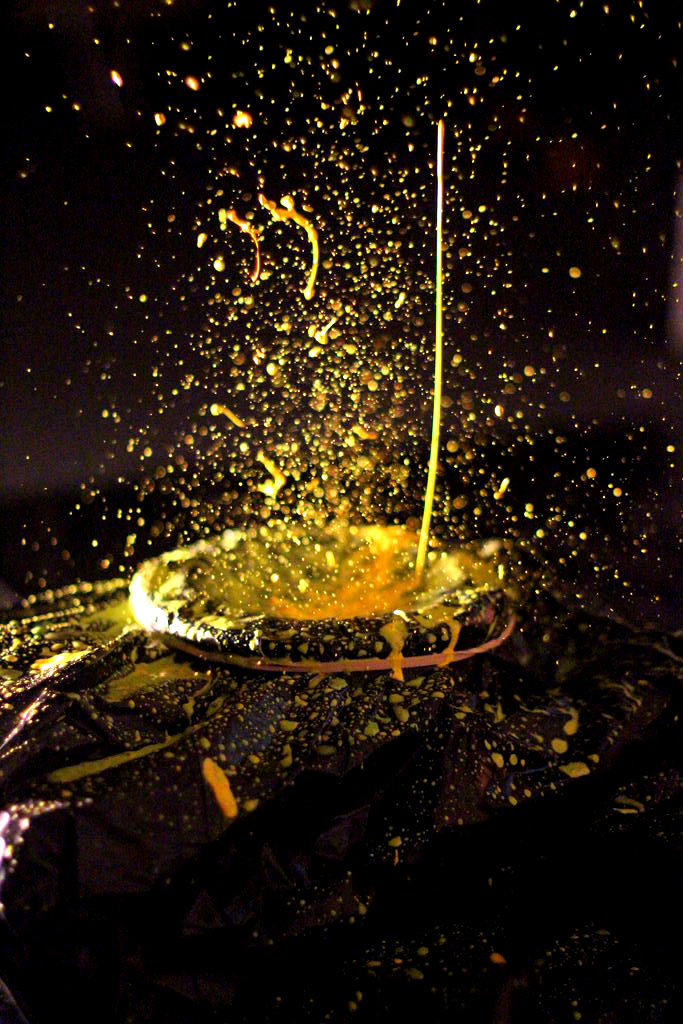
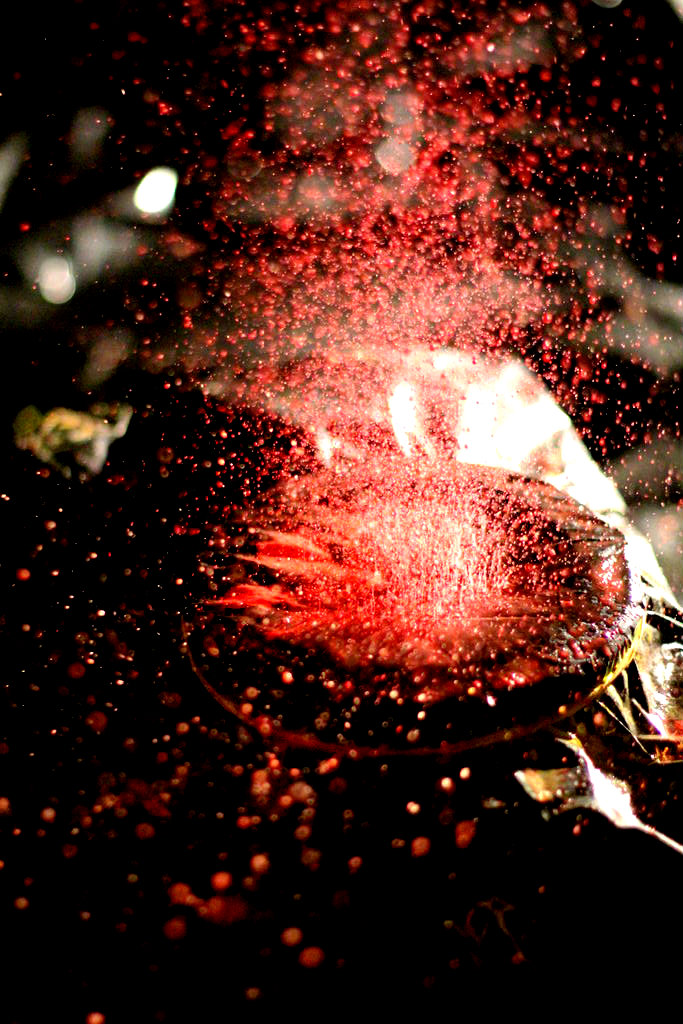
Two songs with a strong bass line. Two photographers. Five tech people. A mixed group ranging in age from eight to fifty something. A donated stereo. One camera, Trash bags. A borrowed light. A public library meeting room. Some paint, water and a rubber band. This is how we (RAMP- Random Access Maker People) made paint dance.
This isn't to say you can't get similar or even better results with a $50,000 photography studio. But having a dozen giggling kids and childish adults screaming and running from flying paint bombs is the main focus of this Instructable.
FOR THE 2015 MAKERPACE CONTEST
This project, the images and accompanying text is a collaboration of several members of RAMP.
Picking the Music
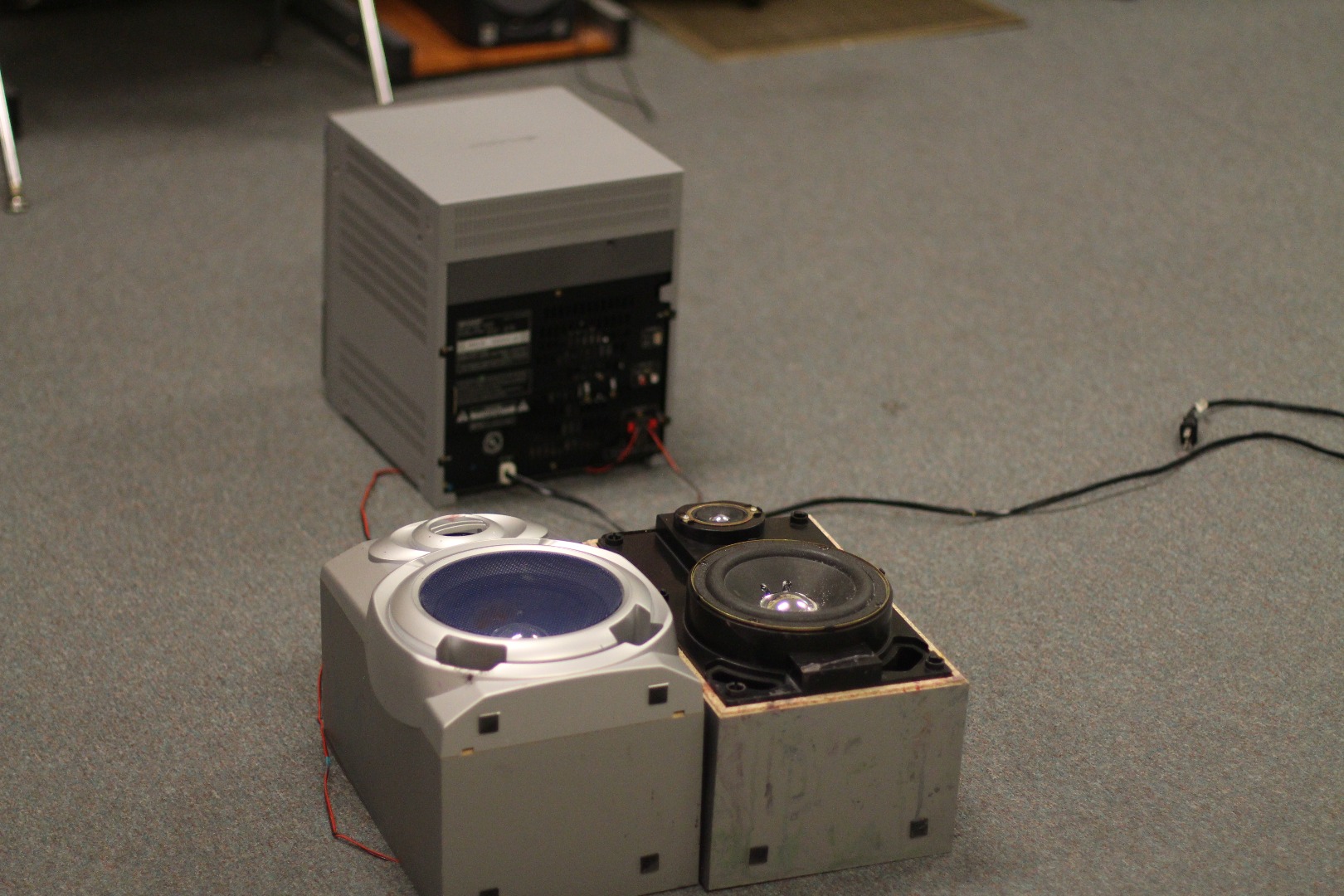
The songs we chose were "Gorilla" by Bruno Mars and "Bumpy Ride" by Mohombi. Choose a song with a strong bass line. The bass in the song will be the driving force behind your success with this project. When trying to decide on your music try to picture how the music would look if you could see it. What color would it be? How high will it bounce when you turn up the bass?? This project give you a visual of what the sound engineers were thinking when recording. It is more important than you know.
Growling rumble-bass makes the paint boil, big kick drums makes it explode. Different sounds make cones, spheres, coronas or centralized fountains. Pick your own tunes and crank it up.
Set Up

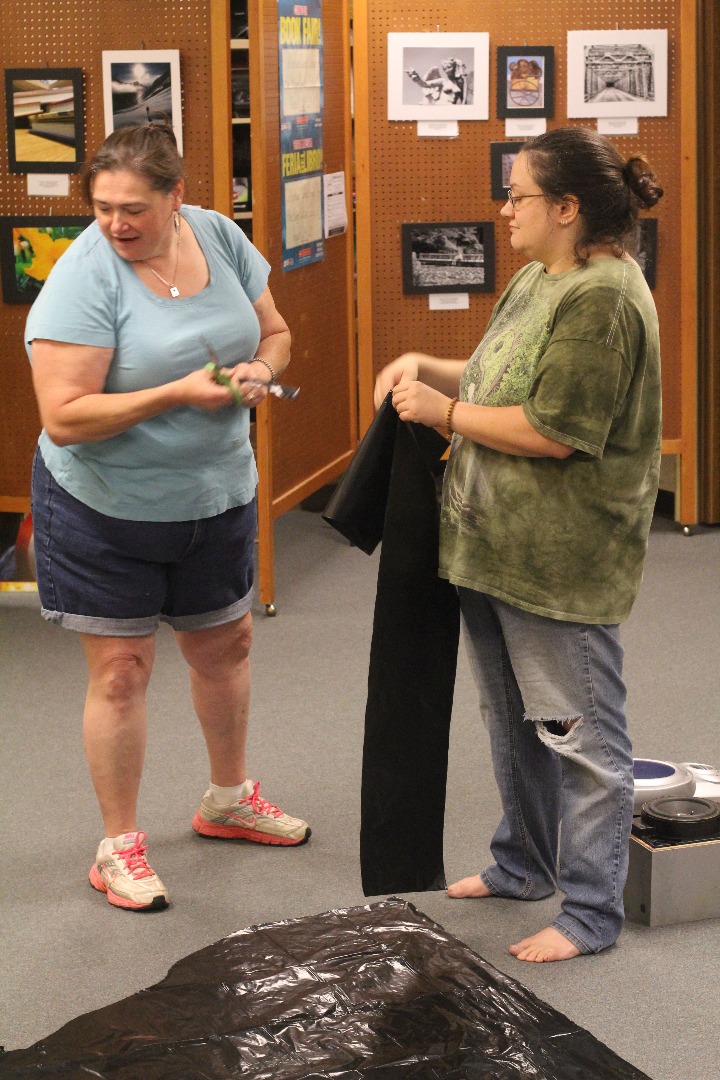
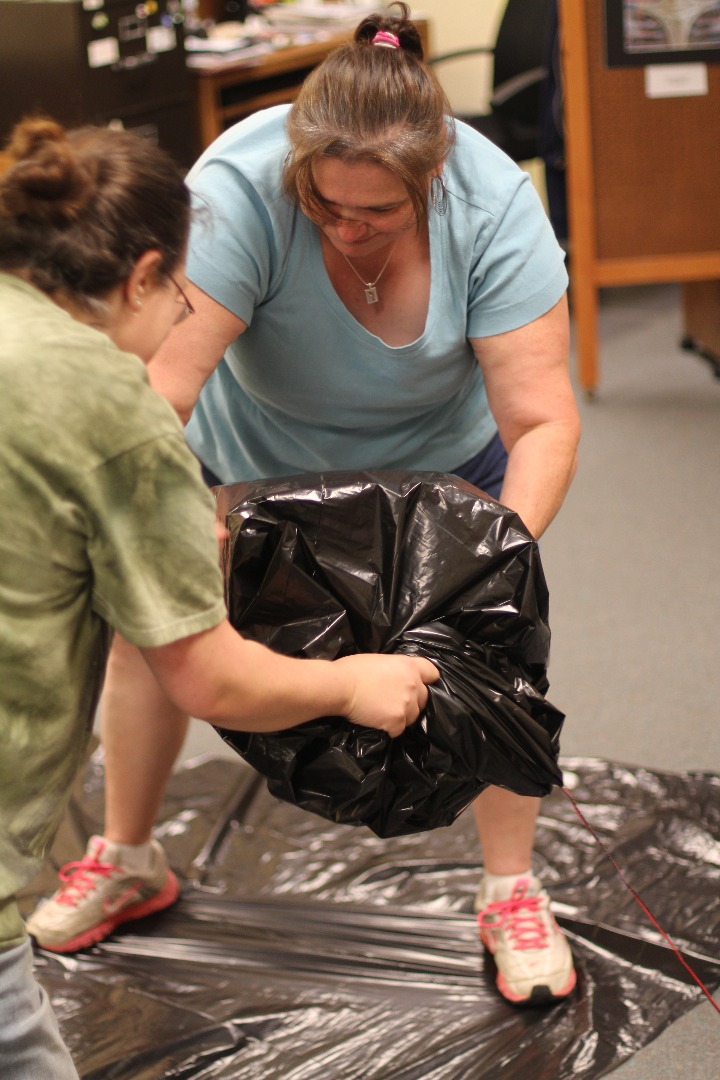

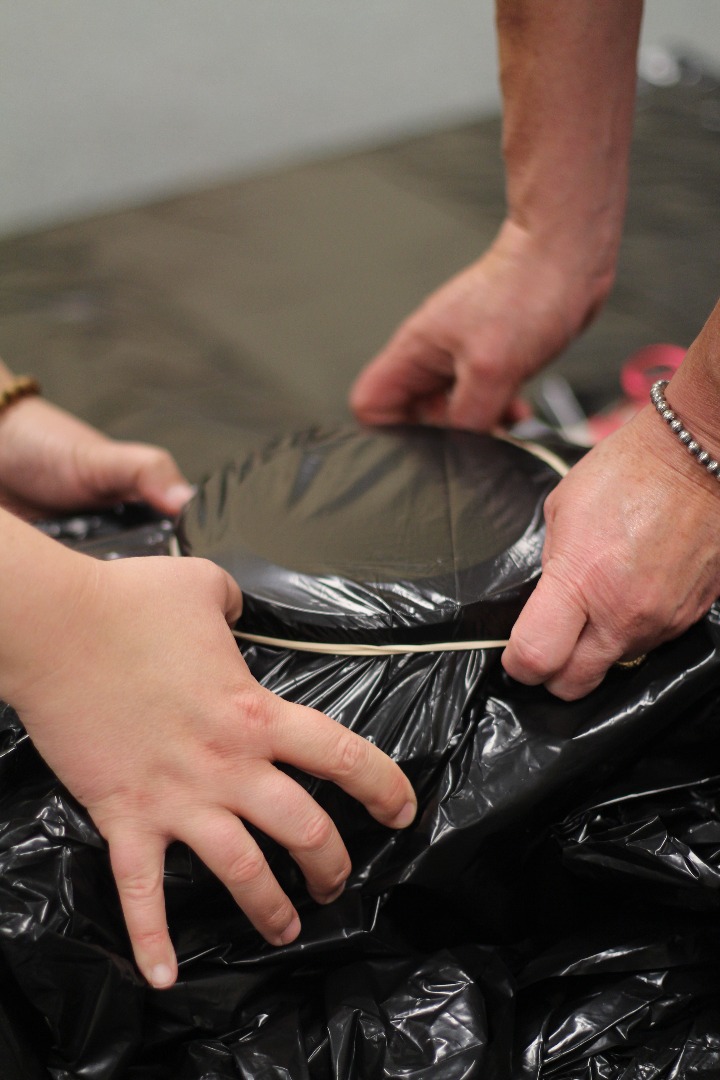
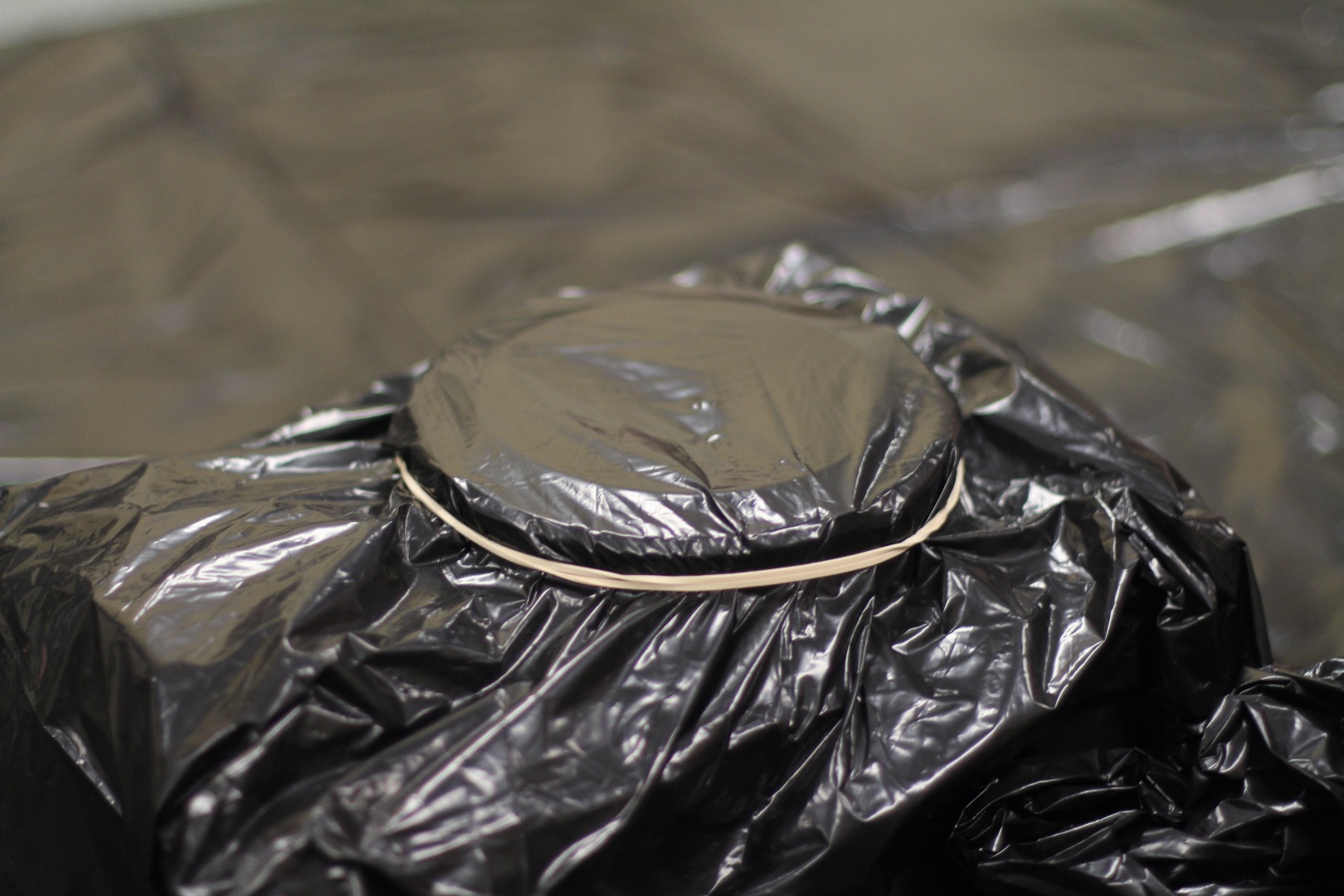
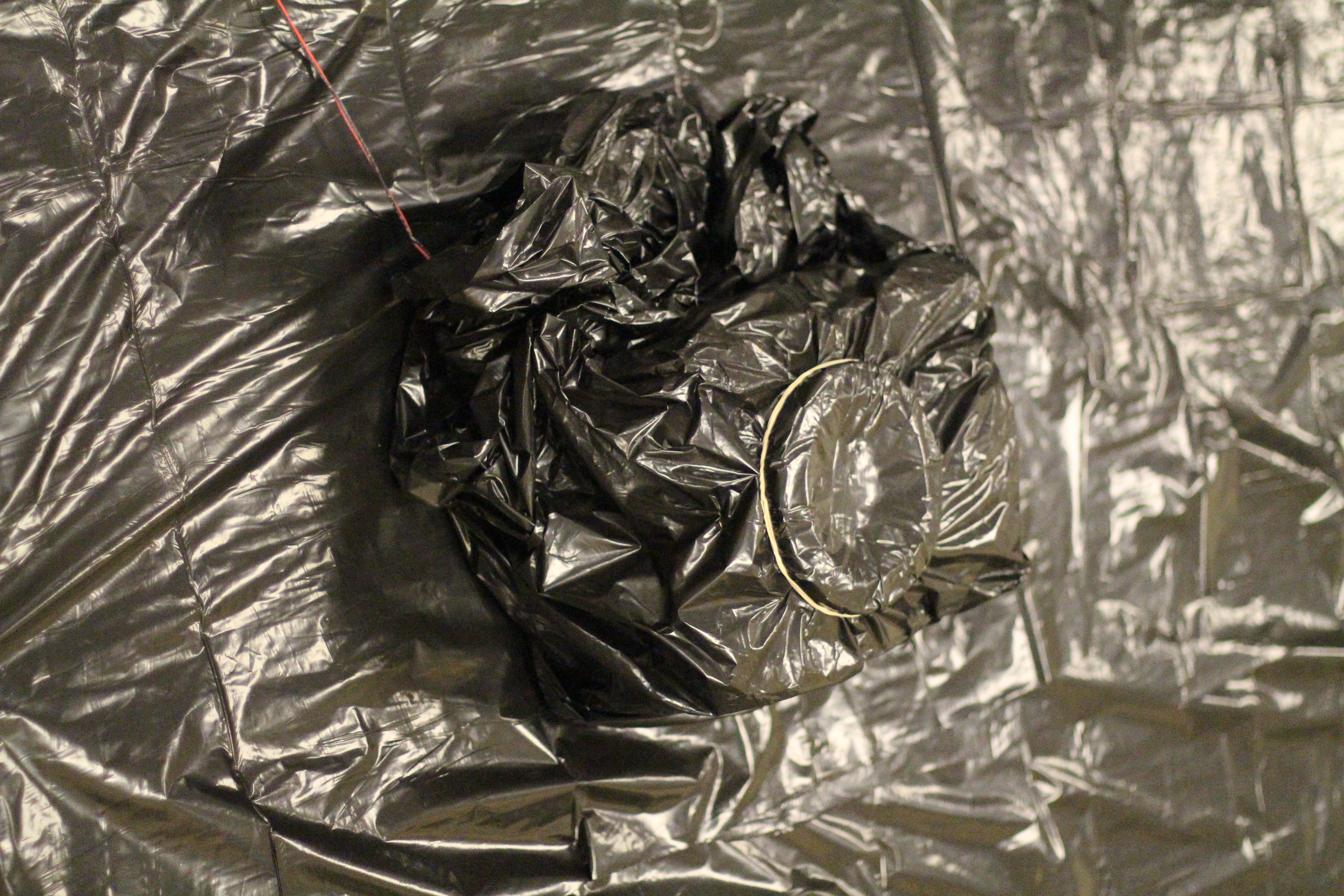
The set-up took a large portion of the time we were involved in this project. Remember we meet at a public library and must be mindful that it is a public space, not someone's garage or the great out of doors. We had to make sure the floor was protected. It was a carpeted floor. So we cut trash bag (heavy duty) 6 of them and spread them on the floor. We had to make sure they overlapped so that the paint would not get on the carpet.
The speaker also had to be wrapped and the stereo protected. So once again the same type of trash bag was used. The speaker was placed inside of a closed bag and the plastic was wrapped around it securely.
The speaker was then placed on the floor. A rubber band was placed around the cone of the speaker to tighten the plastic over the speaker and almost provide a trampoline effect.
One of the tech crew was recording the entire photography session so that we would have a record of what we did. Just to look back and see what the process looks like.
Camera Settings
We are lucky. One of our group members has a nice, modern DSLR camera. But you can get fun results with a point-and-shoot set to "Sports" mode. This was about having fun, not about getting the perfect photo. Just be sure to provide lots of light, and any camera should be able to provide a memorable record of the mayhem and laughter that will ensue.
But the better your camera, and the more you know how to control it, the sharper your pictures will be.
We used a Canon Rebel T4I, the ISO set on auto, Mode set to TV (shutter speed priority) and Shutter Speed usually set to 1250 to 1600. We had the classic nifty-fifty, a 50mm 1.4 lens. This gave us a lot of leeway with speed, but limited our depth of field to about an inch deep - just fine for this task. If you are comfortable in the dreaded manual mode, then awesome, dial it in and the photos will be even better.
Advanced tips: We found that setting the focus to center select helped keep the image in focus. We used black plastic, so we dropped the exposure a couple of stops to keep it looking black. We used full-burst and shot in JPEG only. If that makes sense then great, if not don't worry - just pull the trigger as fast as you can,
The Paint
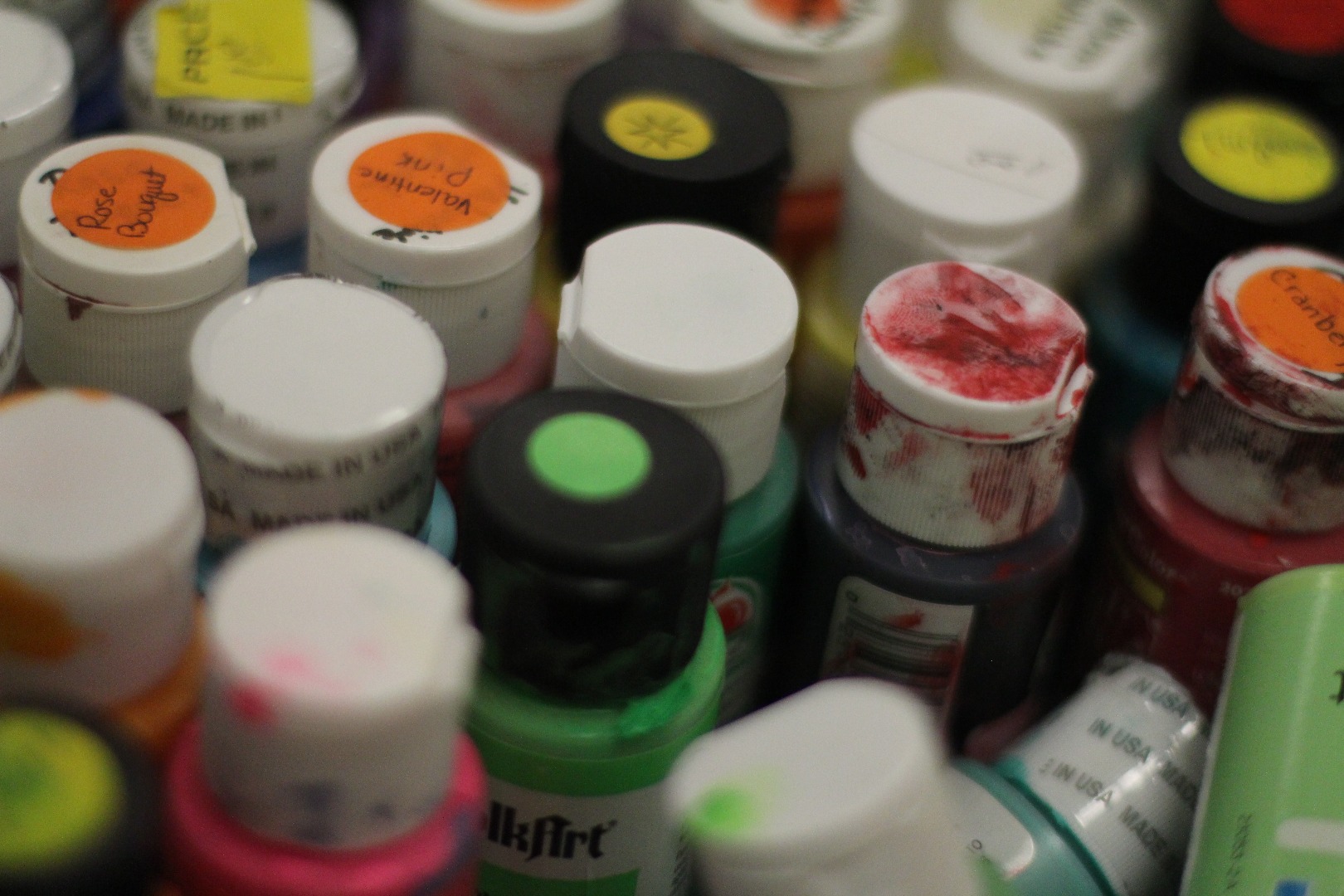
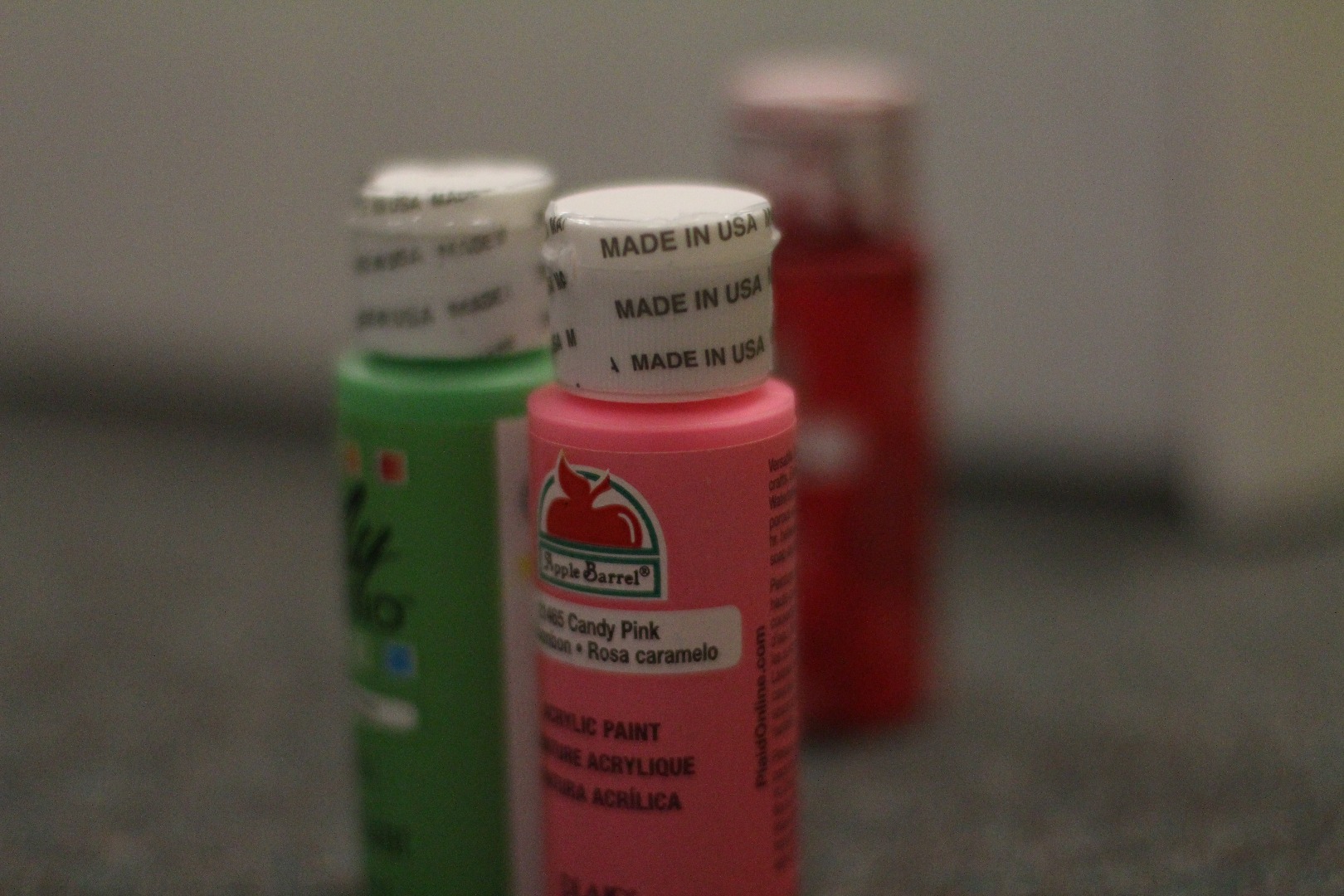
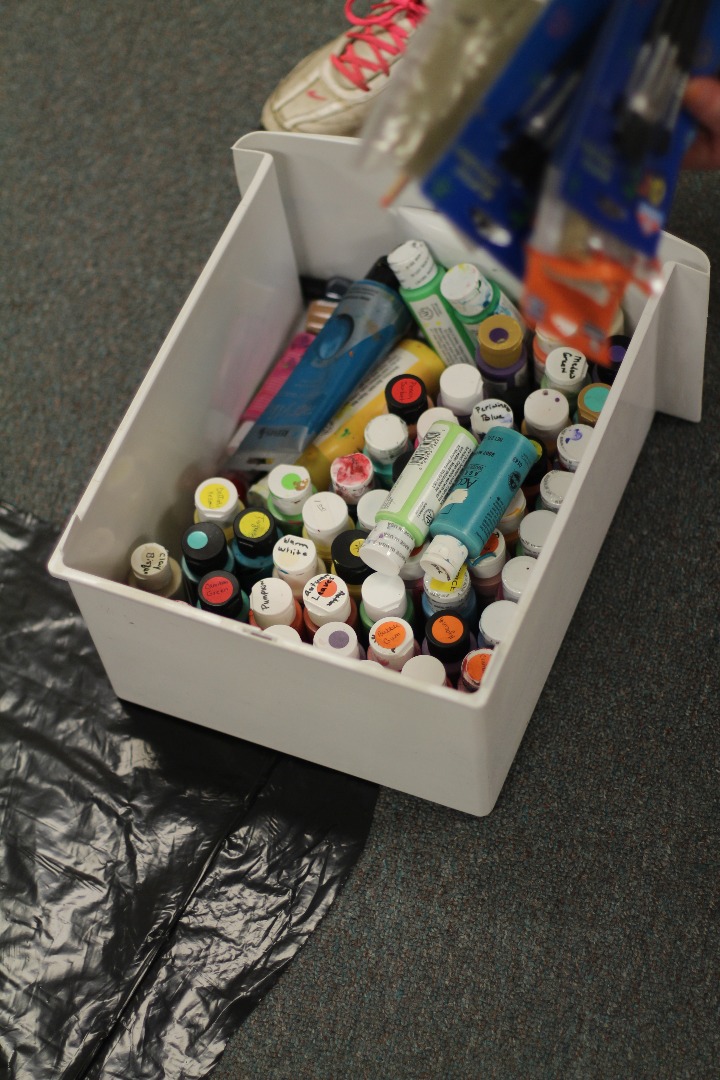
We chose the inexpensive crafters paint for this project. It is thinner than it's fine art cousin and the color is richer than it's preschool cousin, tempra paint. The thickness, or viscosity, of the paint affects how it flies into the air. Thicker paint ejects blobs like molten lava. Thinner paint launches beads and strings. Really thin paint almost boils and can erupt into a fine mist. Which is best? All of them.
Bolder colors make for better photos. We mixed and matched colors freely. Sometimes the colors went muddy. But we were flinging so much of it into the air so quickly that the mud evaporated and we were back to pure colors a few seconds later.
If you are doing this as a solo project instead of an interactive group-based free-for-all, you could pre-mix your paints to the preferred consistency to reduce the need for multi-tasking.
Just remember, if you are doing this in a shared space PLEASE clean up and leave no trace.
Lighting
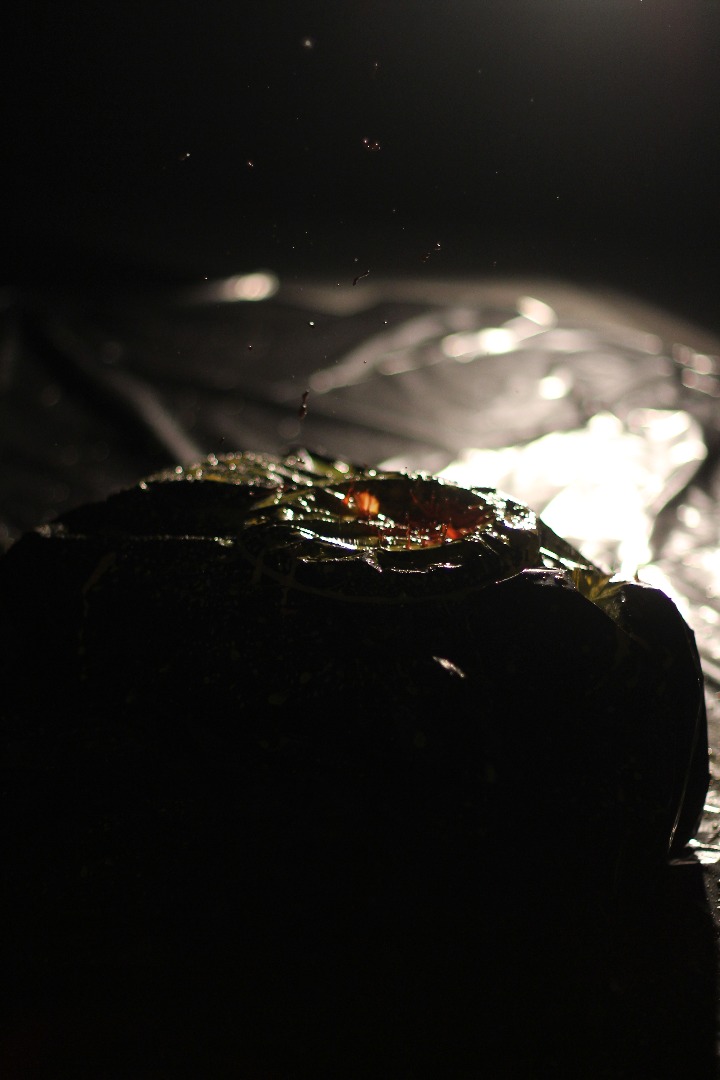
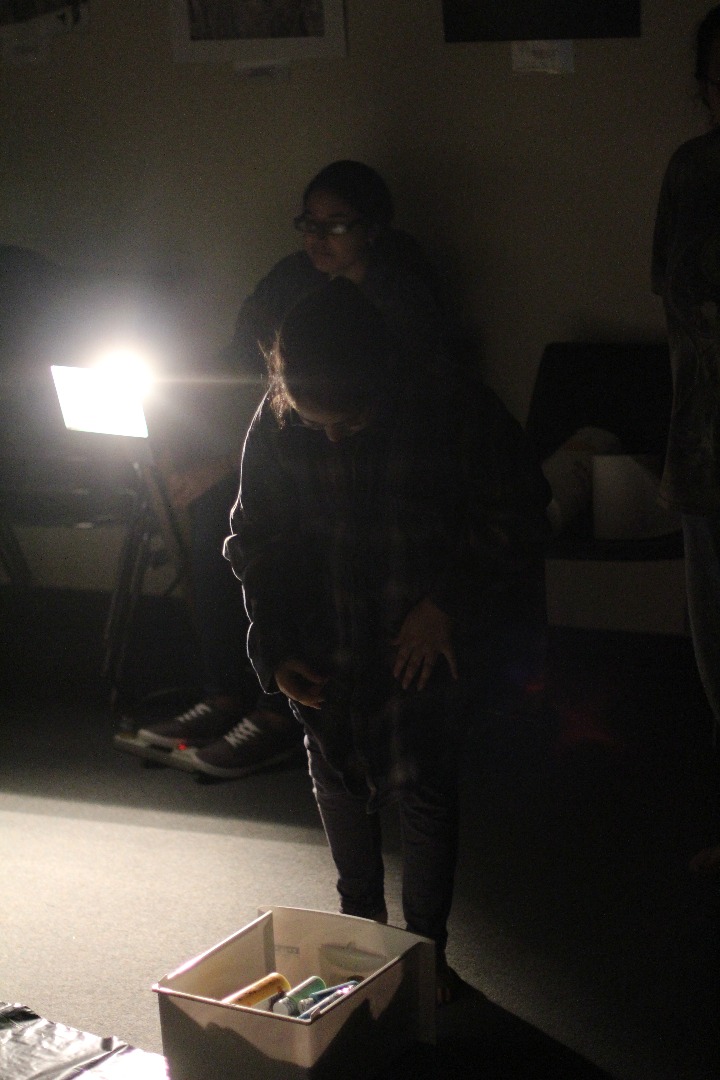
Lighting is crucial to this project. If the room is fully lit, you don't get the dramatic effect. So we chose what we had at our disposal and we made it work. It was a single flood light. Nothing fancy, no special tricks or light box. Just a light. Our lighting expert was a teen who has an interest in photography, this was a chance for her to see how lighting can make or break a photograph.
Since this involves water and electricity, make sure you use a sealed light. And keep the light and cords away from the water. Those job-site flood lights are perfect. They are weather sealed, cheap, durable and very bright.
Put a lens protector on your camera and wear old clothes too.
The amount of light is more important than the quality of light. We actually liked the harsh, strong side-lighting the flood light gave us - so dramatic. This is bold, abstract stuff. Who cares if there's a little color cast to the halogen lights.
Remember, you are shooting at a very fast speed (1250 - 1600) so you have to really blast the scene with as much light as you can. With more light, you could even go to 4000. Or you could keep the speed at 1600 and change the aperture for a deeper depth of field. We could easily have used two of these lights and still been okay.
The angle of the light also affects the look of the photo. Move the light or camera around the speaker and play with different combinations. With the camera near the light the images look good, but when the light and camera are at 90 degrees from each other you get a nice, raking side-light that adds some pop. If you start to shoot nearly into the light you can get some cool but unpredictable results. But do play with different angles.
OR JUST GO OUTSIDE
That big thermo-nuclear ball in the daytime sky is a fantastic source of light, even with cheap cameras. And the grass is a really forgiving, easy to clean (or ignore) surface for some paint flinging.
The Water Test
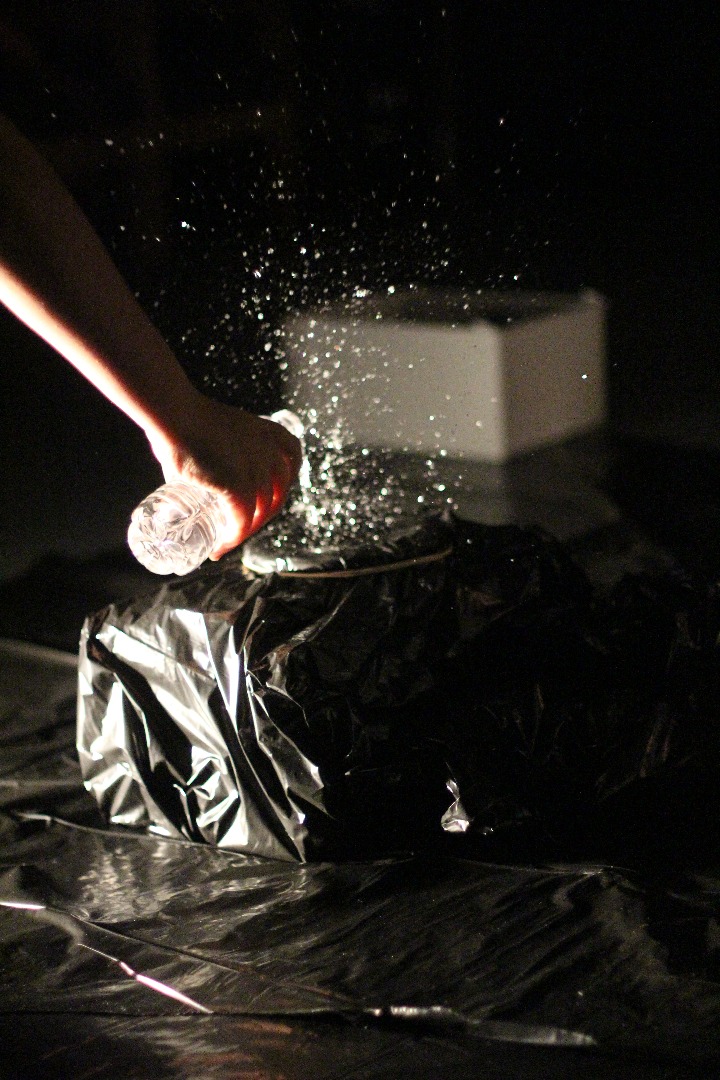
A 7th grade boy in was in charge of adding the water. So the first thing to hit the speaker was water. Once we saw that the water would bounce, we were ready to begin adding paint and watching magic happen. His job was to fine tune the consistency of the paint. It sounds simple, but it takes a good eye and some judgment as to when and how much water to add. Since the water-manager gets close to the action, it also takes someone who isn't afraid to get a little dirty.
We didn't explore this, but plain water with some colored lights shining onto it might give a pretty cool looking effect also - and be easier to clean up.
Adding the Paint
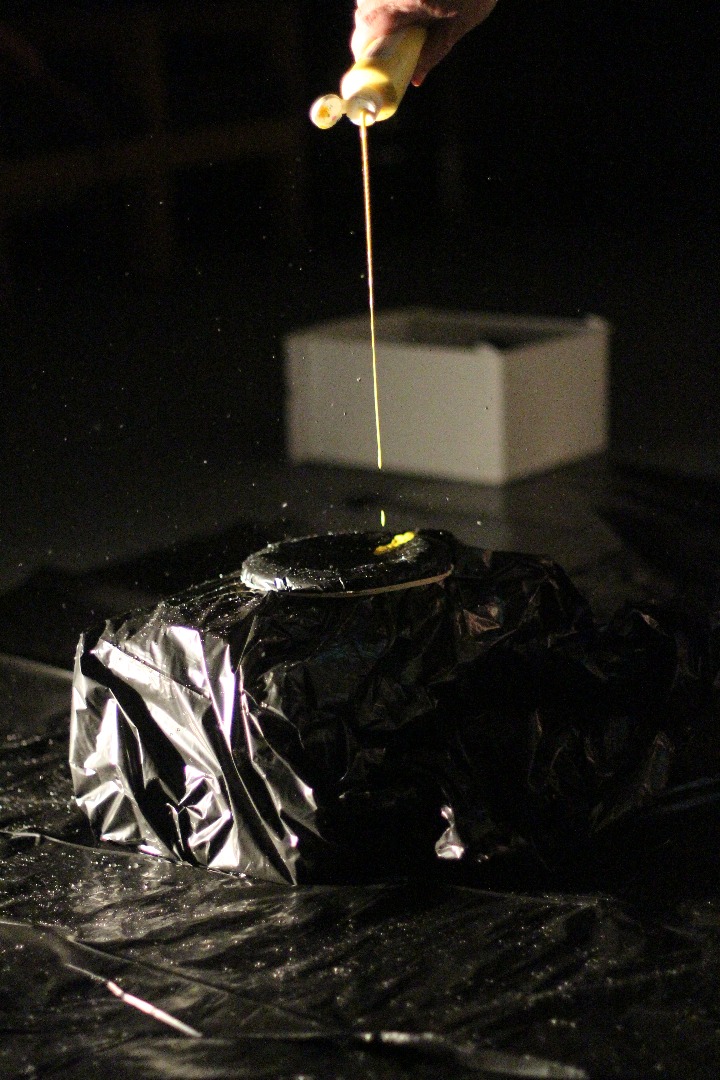
A third grader - who better to want to add the paint to the speaker. We set the box of colors in the floor and allowed her to do what she does. She was great paint thrower. She could get in and out quickly and she didn't care if she got spattered. Watching the paint thrower and water pourer interacting was almost, but not quite, as much fun as watching the paint bounce. These kids got into their job and took it seriously. When they figured out the correct mixture and timing, well things got fun and messy in a hurry.
Adding the Water
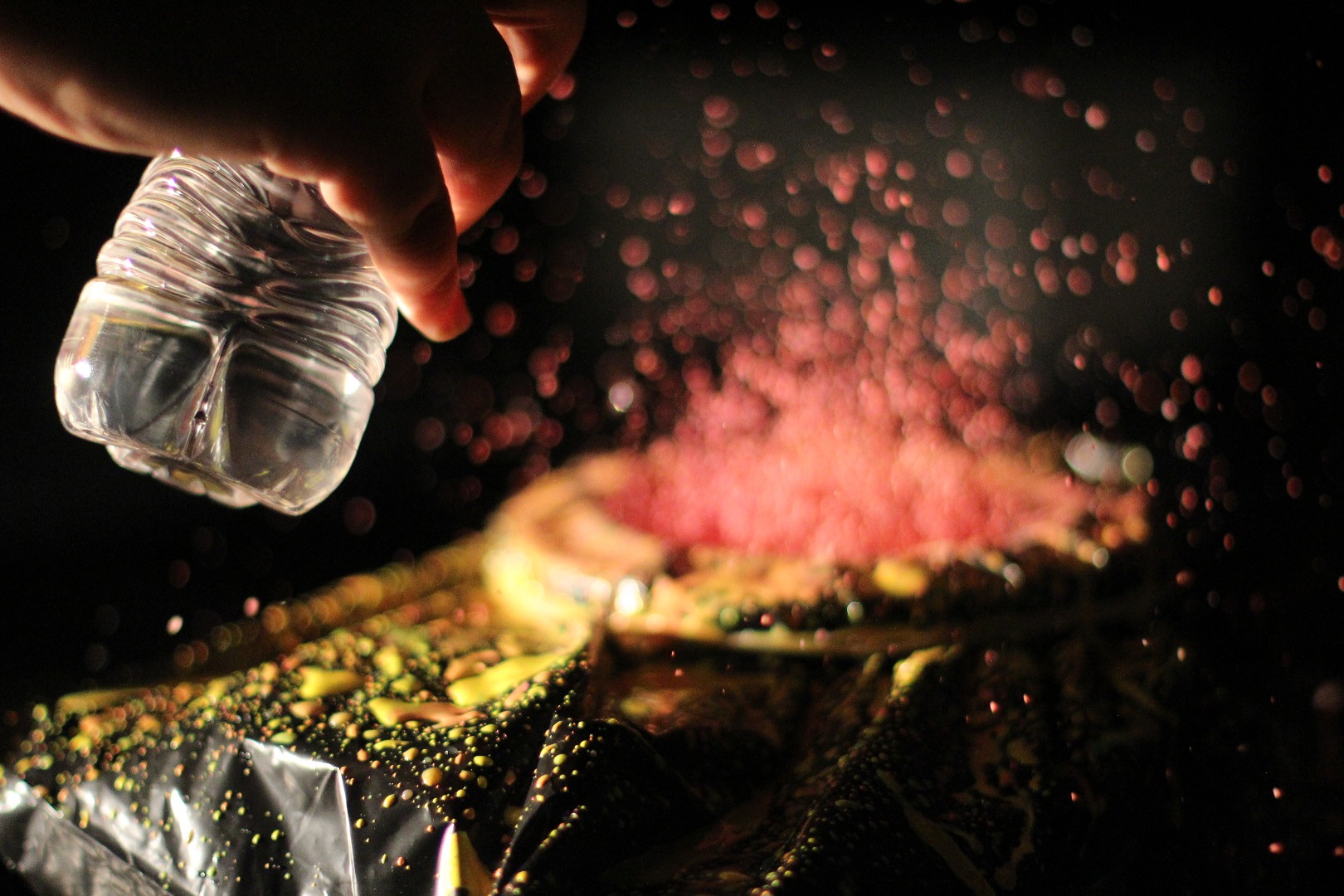
Once the paint was added, a small amount of water should be added. Not a whole bottle. Just a tiny bit of water should be added. Just enough to get the color to move.
Volume, Bass, Volume, Bass
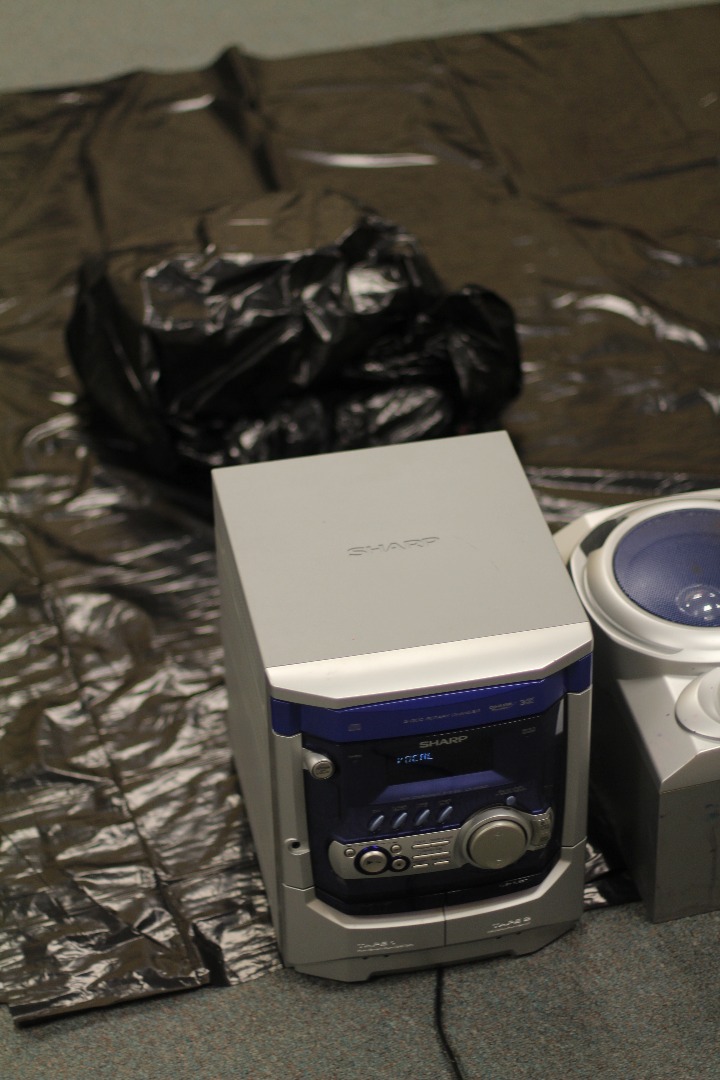
How the stereo is set up is very important. This project is not for people who have auditory sensitivity. One of our members used ear plugs during the process. You need to have the volume cranked up and the bass as strong as it will go. The stereo we used, luckily is equipped with a bass boost.
We just did a quick run through. But if you get serious, try playing with the volume. Once you see what shapes are created by different musical passages, you might be able to start sculpting the even more to your liking.
The Results
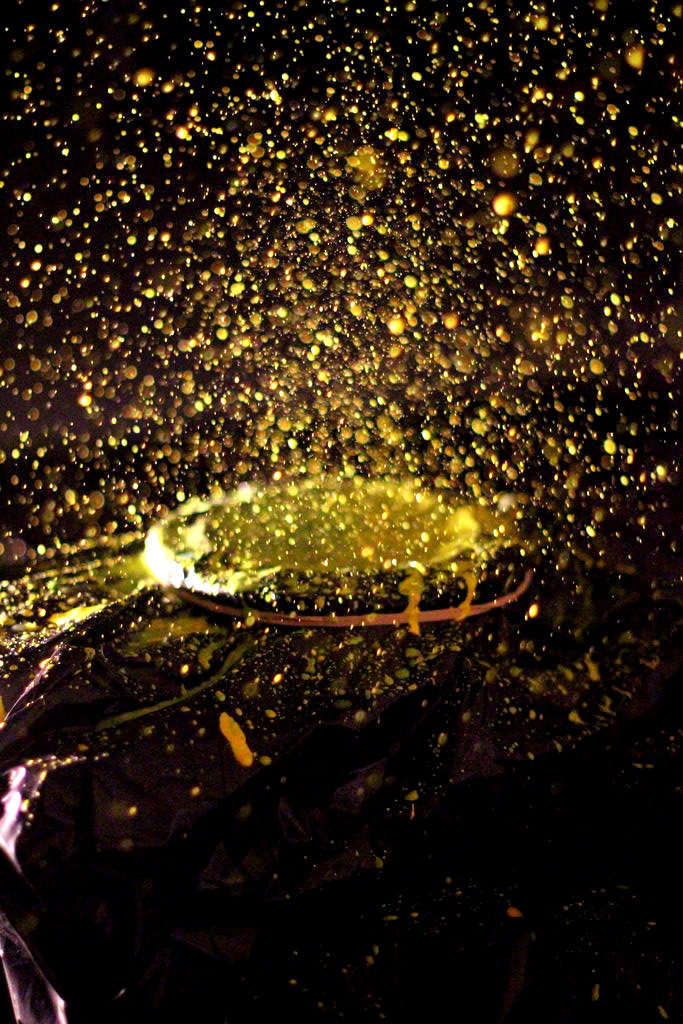
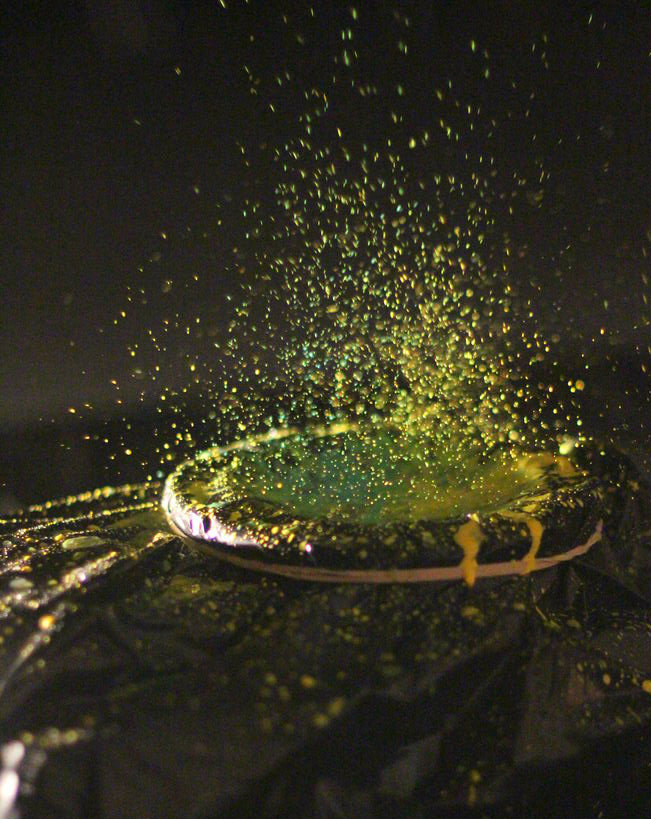
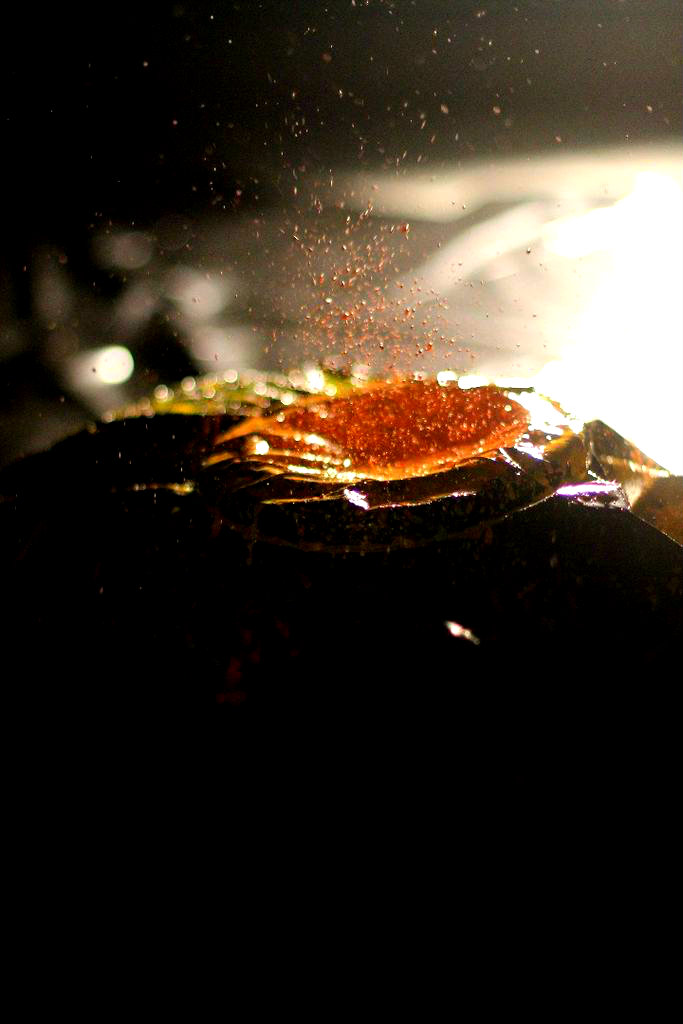
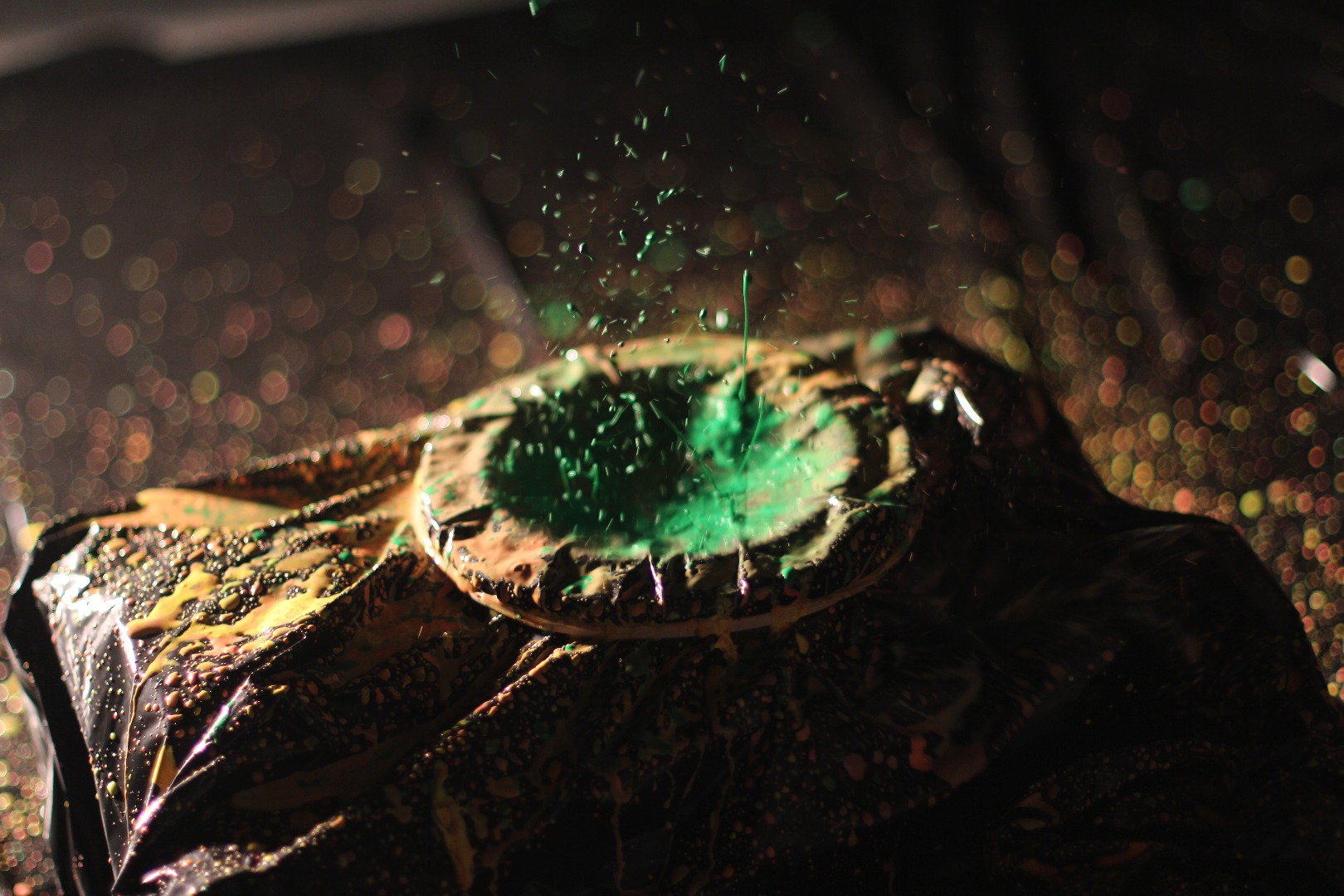
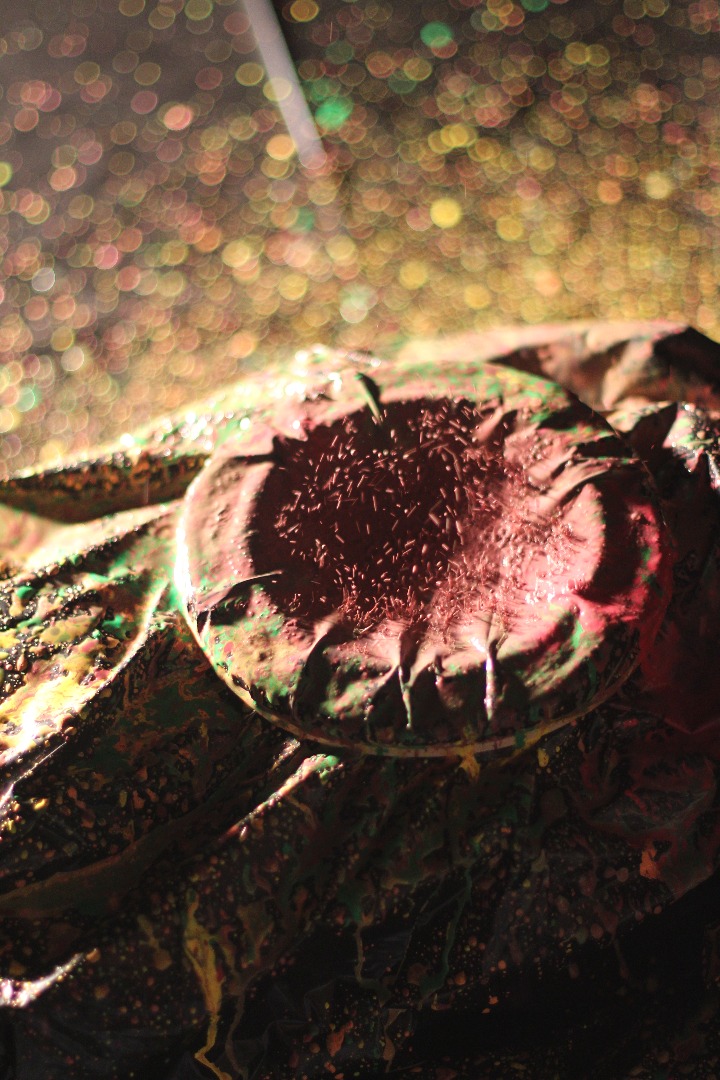
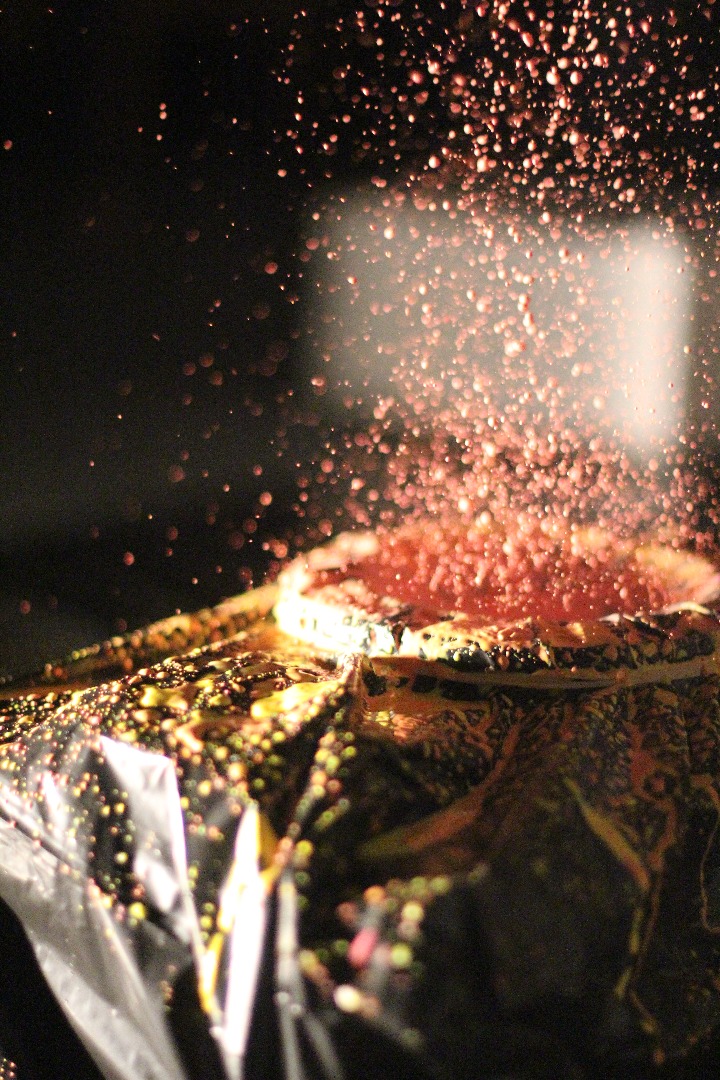
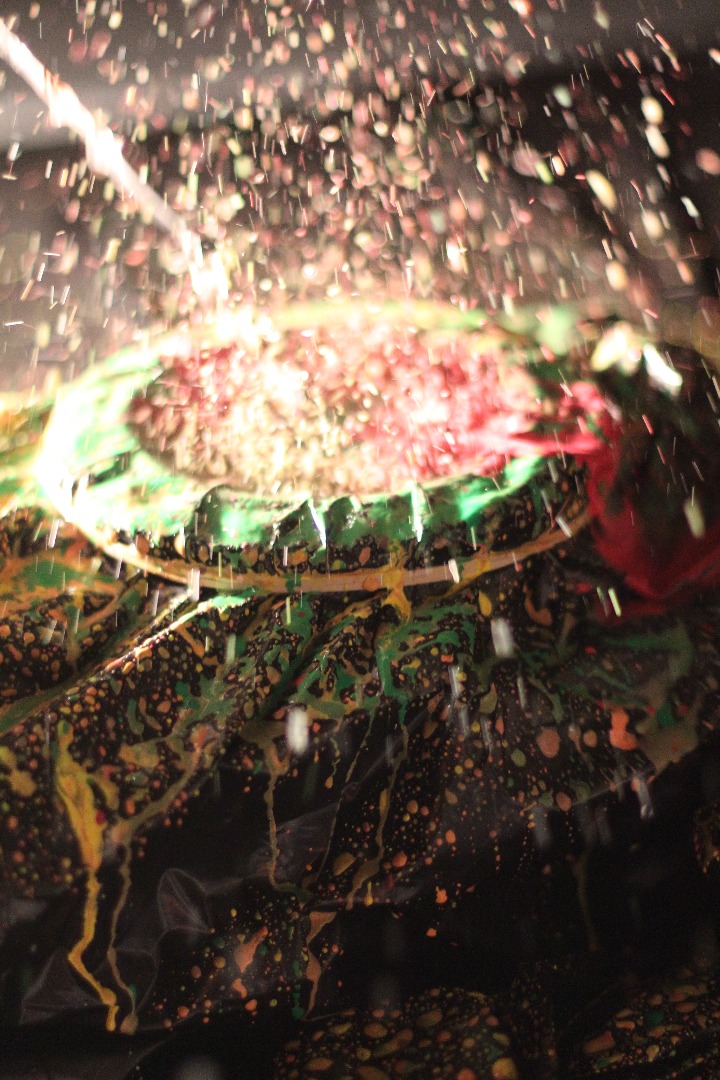


As you can see, a group with no permanent space to meet, with donated and borrowed items pulled it off. We may not have it all, but we use what we have and that is our people and the synergy of the tribe. We worked together and it turned out to be some pretty awesome photos. These are but a few of the photos taken that night.
The Aftermath and Clean Up
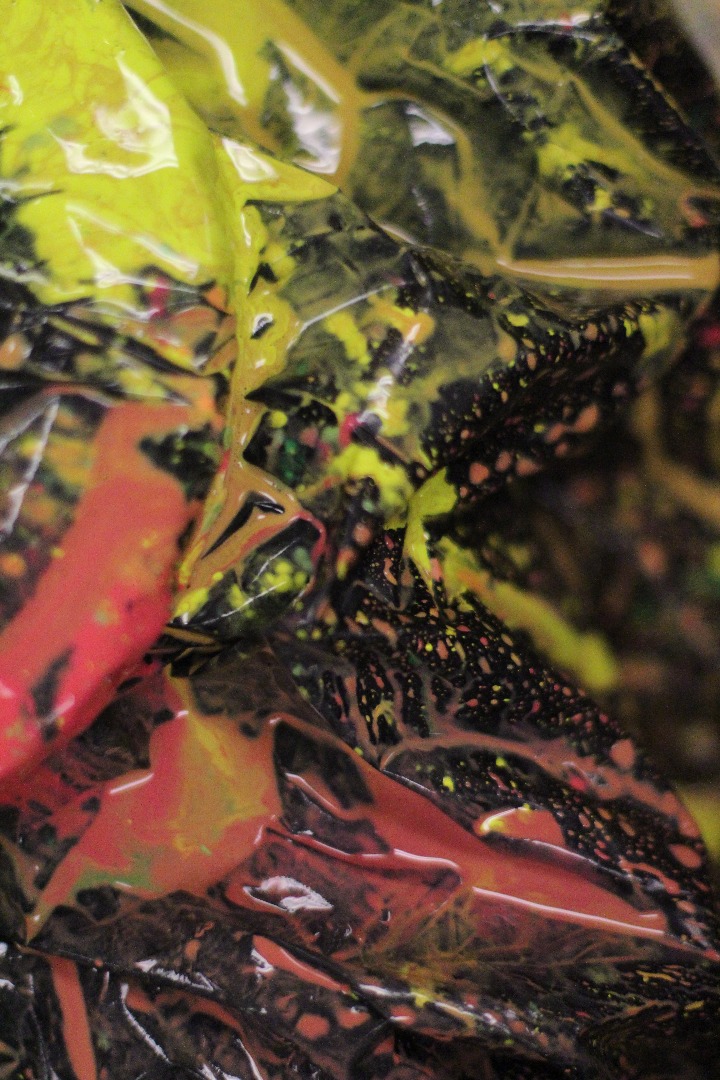
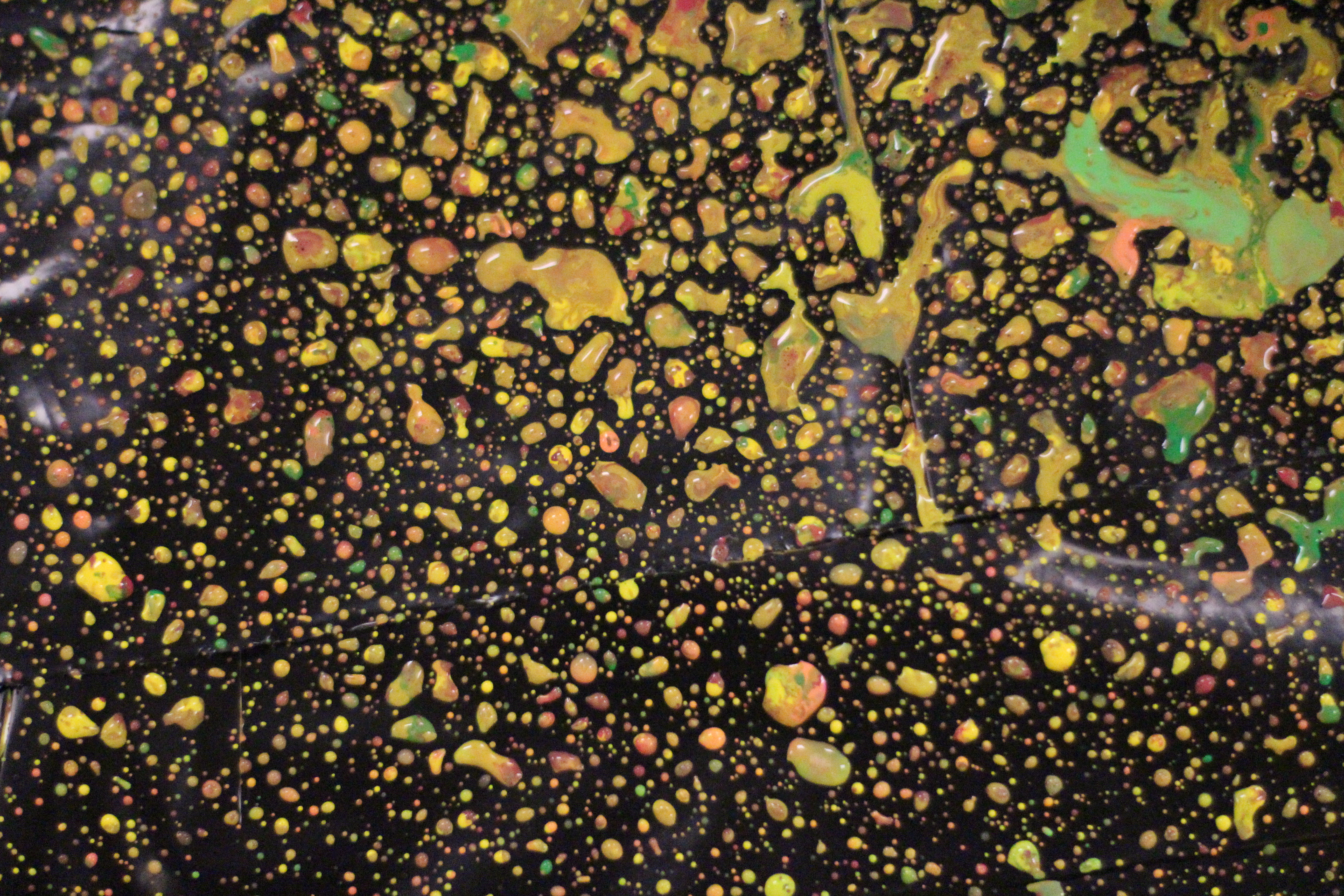
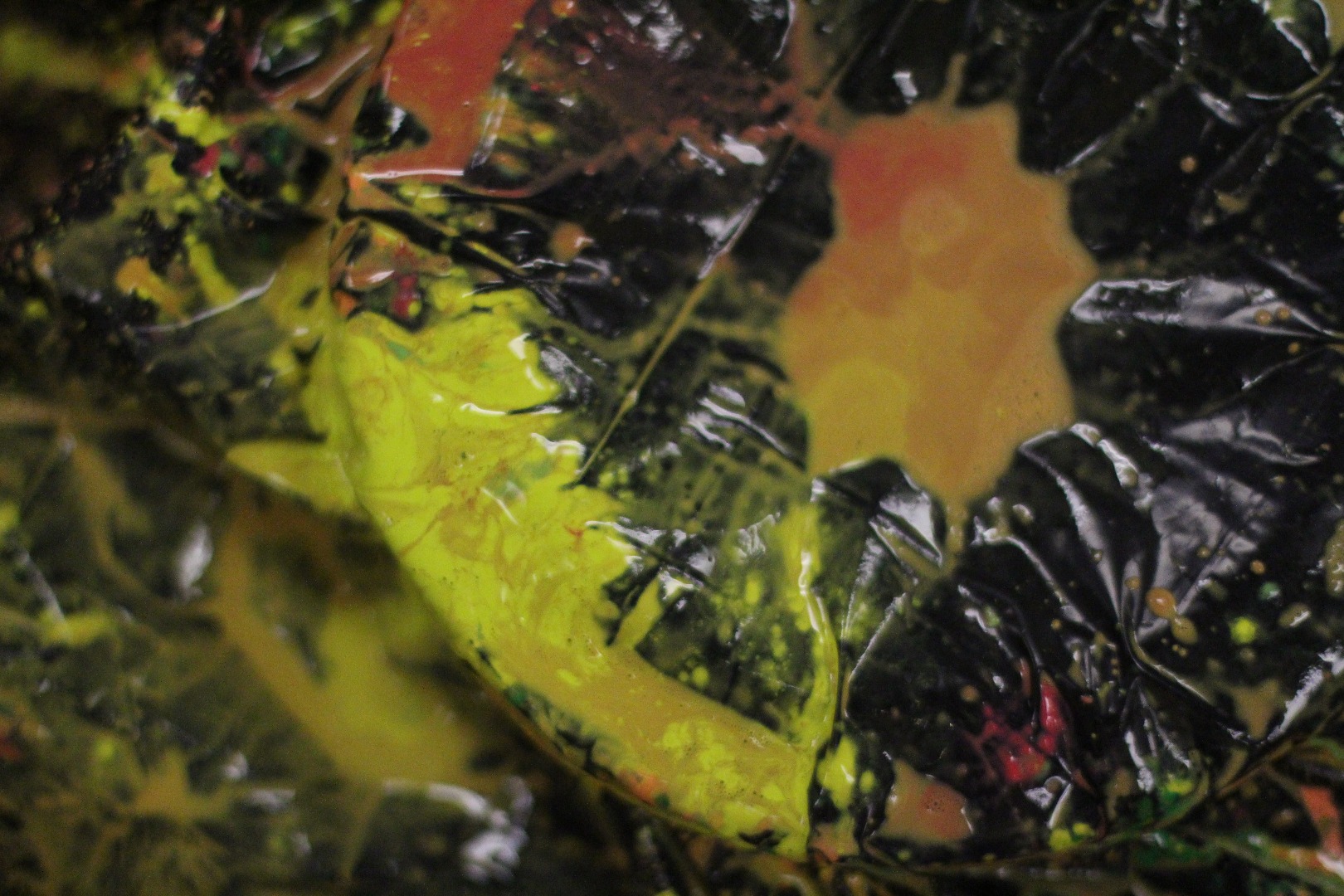
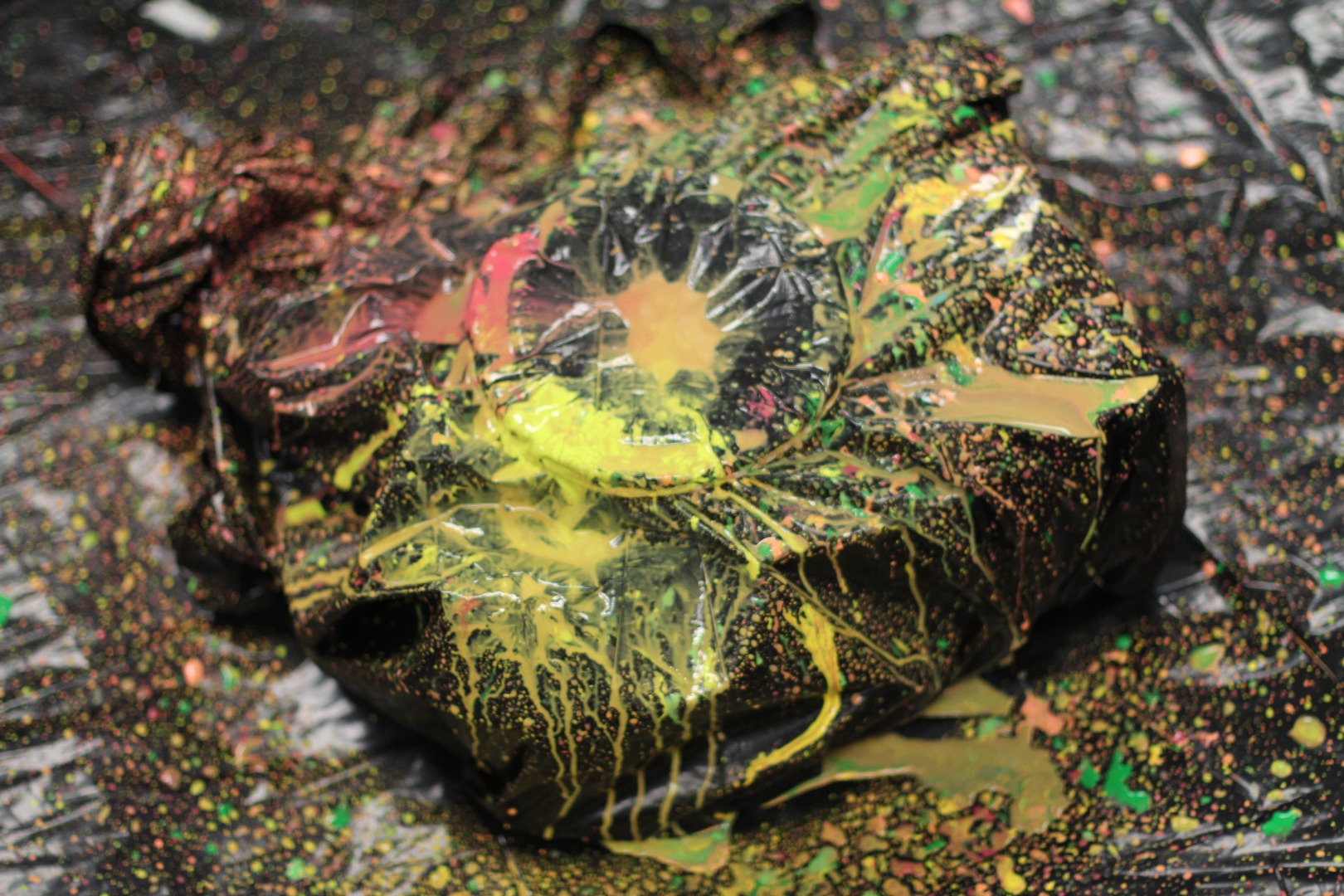
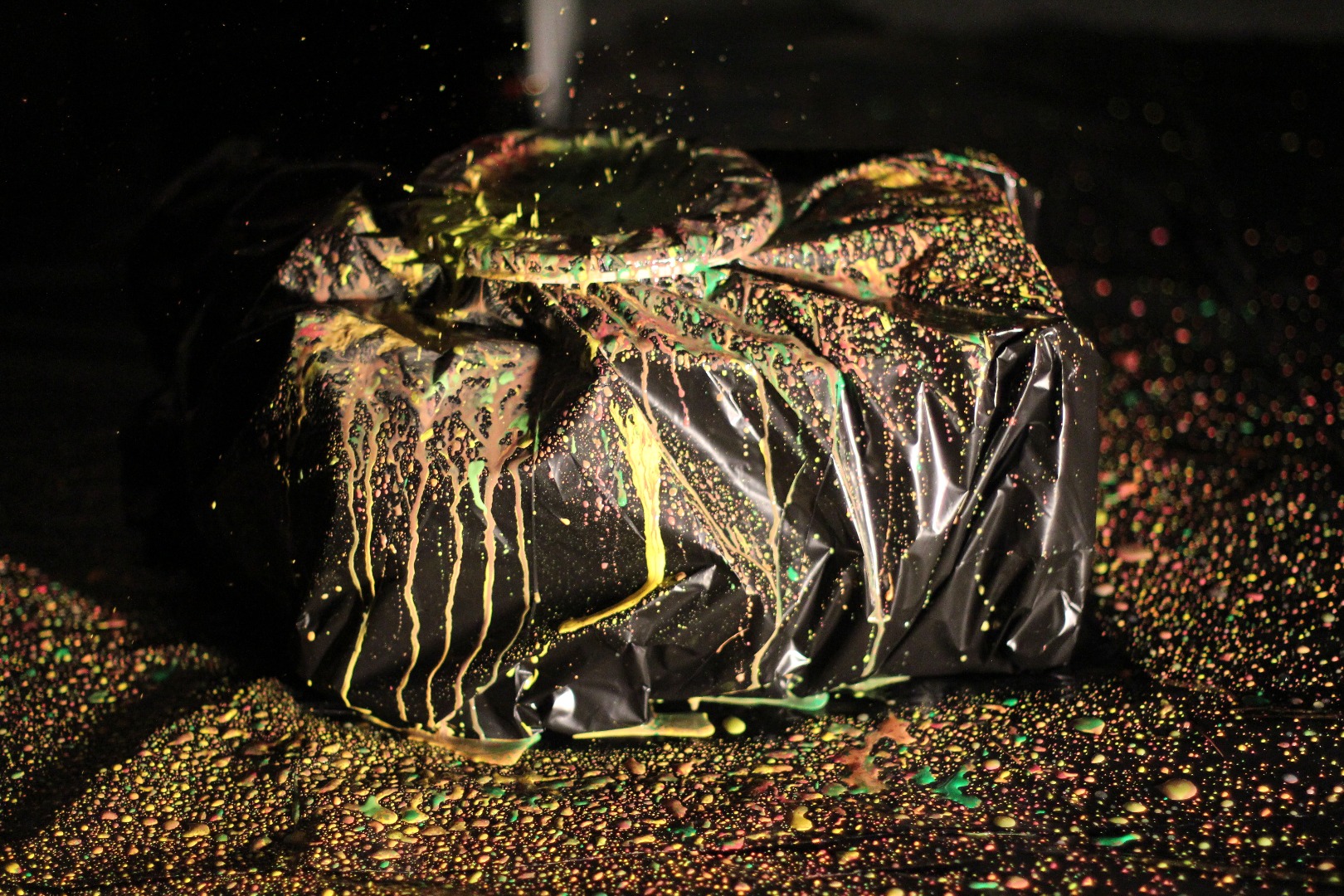
Cleaning up was not too bad. We rolled the paint spattered garbage bags up and threw them away. Unwrapped the speaker and put it away and check for spots on the carpet. The cool thing was the images that photographer number 1 spotted in the spatters of paint on the trash bags used to cover the floor. They are some really cool images themselves.
You don't have to have a high dollar studio to pull this project off, you just need the right people and determination and a booming bass line.